A Preliminary Analysis on Gender Aspects in Transport Systems and Mobility Services: Presentation of a Survey Design
Abstract
1. Introduction
2. Gender Issues in Transport and Mobility
2.1. Gendered Differences in Mobility Behavior
2.2. Safety and Security in Transport
2.3. Travel Satisfaction
2.4. Best Practices: Technologies and Services to Serve Gender-Equal Mobility
- creating spaces in buses for people travelling with shopping or small children;
- providing bikes to transport children;
- optimizing the locations of docks for bike-sharing schemes or generalizing dockless bike-sharing.
3. Focus Group Activities in TInnGO Hubs
3.1. Reported Experience at the Greek Hub
3.2. Reported Experience at the Portuguese Hub
3.3. Reported Experience at the Spanish Hub
3.4. Reported Experience at the UK Hub
4. Lesson Learned and Survey Implementation
4.1. Main Insights from the Focus Group Activities
- Brighter stops for avoiding any kind of attacks and modifications inside buses to customize for vulnerable users such as pregnant women, older women, and women with children;
- Facilitate feedback collection of passengers;
- Improvement in accessibility conditions for elderly and disabled people.
- More attention to schedule and time plan;
- Train drivers to improve their behavior.
4.2. Survey Design
5. Conclusions and Future Work
Author Contributions
Funding
Institutional Review Board Statement
Informed Consent Statement
Data Availability Statement
Acknowledgments
Conflicts of Interest
References
- Boisjoly, G.; Yengoh, G.T. Opening the door to social equity: Local and participatory approaches to transportation planning in Montreal. Eur. Transp. Res. Rev. 2017, 9, 1–21. [Google Scholar] [CrossRef]
- Preston, J.; Rajé, F. Accessibility, mobility and transport-related social exclusion. J. Transp. Geogr. 2007, 15, 151–160. [Google Scholar] [CrossRef]
- Herwangi, Y.; Pradono, P.; Syabri, I.; Kustiwan, I. Assessing transport disadvantage and transport related social exclusion for inclusive transportation planning: A review of methodology. In Proceedings of the Planocosmo International Conference, Bandung, Indonesia, 21–22 October 2013. [Google Scholar]
- Thynell, M. The quest for gender-sensitive and inclusive transport policies in growing Asian cities. Soc. Incl. 2016, 4, 72–82. [Google Scholar] [CrossRef]
- Delbosc, A.; Currie, G. Exploring the relative influences of transport disadvantage and social exclusion on well-being. Transp. Policy 2011, 18, 555–562. [Google Scholar] [CrossRef]
- Gauvin, L.; Tizzoni, M.; Piaggesi, S.; Young, A.; Adler, N.; Verhulst, S.; Ferres, L.; Cattuto, C. Gender gaps in urban mobility. Humanit. Soc. Sci. Commun. 2020, 7, 1–13. [Google Scholar] [CrossRef]
- Church, A.; Frost, M.; Sullivan, K. Transport and social exclusion in London. Transp. Policy 2000, 7, 195–295. [Google Scholar] [CrossRef]
- Joelsson, T.; Lindkvist Scholten, C. Integrating Gender into Transport Planning: From One to Many Tracks; Palgrave Macmillan: London, UK, 2019. [Google Scholar] [CrossRef]
- Politis, I.; Fyrogenis, I.; Papadopoulos, E.; Nikolaidou, A.; Verani, E. Shifting to shared wheels: Factors Affecting dockless bike-sharing choice for short and long trips. Sustainability 2020, 12, 8205. [Google Scholar] [CrossRef]
- Macioszek, E.; Świerk, P.; Kurek, A. The Bike-sharing system as an element of enhancing sustainable mobility—A Case study based on a city in Poland. Sustainability 2020, 12, 3285. [Google Scholar] [CrossRef]
- Nikiforiadis, A.; Ayfantopoulou, G.; Stamelou, A. Assessing the impact of COVID-19 on bike-sharing usage: The case of Thessaloniki, Greece. Sustainability 2020, 12, 8215. [Google Scholar] [CrossRef]
- Jain, J.; Line, T.; Lyons, G. A troublesome transport challenge? Working round the school run. J. Transp. Geogr. 2011, 19, 1608–1615. [Google Scholar] [CrossRef]
- Pirra, M.; Carboni, A.; Diana, M. Assessing gender gaps in educational provision, research and employment opportunities in the transport sector at the European level. Educ. Sci. 2020, 10. [Google Scholar] [CrossRef]
- Woodcock, A.; Romer Christensen, H.; Levin, L. TInnGO: Challenging gender inequality in smart mobility. Put Saobraćaj 2020, 66, 1–5. [Google Scholar] [CrossRef]
- West, C.; Zimmerman, D.H. Doing gender. Gend. Soc. 1987, 1, 125–151. [Google Scholar] [CrossRef]
- Crenshaw, K. Demarginalizing the intersection of race and sex: A black feminist critique of antidiscrimination doctrine, feminist theory, and antiracist politics. Univ. Chic. Leg. Forum. 2018, 1989, 139–167. [Google Scholar] [CrossRef]
- Scheiner, J.; Holz-Rau, C. Women’s complex daily lives: A gendered look at trip chaining and activity pattern entropy in Germany. Transp. Amst. 2017, 44, 117–138. [Google Scholar] [CrossRef]
- European Commission. Flash Eurobarometer 382b—Europeans’ Satisfaction with Urban Transport. Available online: https://ec.europa.eu/commfrontoffice/publicopinion/flash/fl_382b_en.pdf (accessed on 5 January 2021).
- Singh, Y.J. Is smart mobility also gender-smart? J. Gend. Stud. 2019, 29, 1–15. [Google Scholar] [CrossRef]
- European Commission. Attitudes of Europeans towards urban mobility. Spec. Eurobarom. 2013, 406, 1–98. [Google Scholar]
- Berg, J.; Ihlström, J. The importance of public transport for mobility and everyday activities among rural residents. Soc. Sci. 2019, 8, 58. [Google Scholar] [CrossRef]
- Ranković Plazinić, B.; Jović, J. Women and transportation demands in rural Serbia. J. Rural Stud. 2014, 36, 207–218. [Google Scholar] [CrossRef]
- Su, F.; Bell, M.G.H. Travel differences by gender for older people in London. Res. Transp. Econ. 2012, 34, 35–38. [Google Scholar] [CrossRef]
- Istituto per la Ricerca Sociale. Social Inclusion in EU Public Transport. Available online: https://www.europarl.europa.eu/RegData/etudes/STUD/2015/540351/IPOL_STU(2015)540351(SUM01)_EN.pdf (accessed on 3 January 2021).
- Together on the Move. Immigrants in Europe, Their Travel Behaviour and Possibilities for Energy Efficient Travel. Available online: http://www.together-eu.org/docs/file/together_d2.1_state-of-the-art.pdf (accessed on 5 January 2021).
- Candia, S.; Pirlone, F.; Spadaro, I. Sustainable urban mobility and urban safety and security: A case study of the city centre of Genoa, Italy. In WIT Transactions on the Built Environment; WIT Press: Southampton, UK, 2019; pp. 187–198. [Google Scholar] [CrossRef]
- International Transport Forum. Women’s Safety and Security: A Public Transport Priority. Available online: https://www.itf-oecd.org/womens-safety-security (accessed on 5 January 2021).
- International Labour Office. World Employment and Social Outlook: Trends 2017; ILO: Geneva, Switzerland, 2017. [Google Scholar]
- Coppola, P.; Silvestri, F. Assessing travelers’ safety and security perception in railway stations. Case Stud. Transp. Policy 2020, 8, 1127–1136. [Google Scholar] [CrossRef]
- Ortega Hortelano, A.; Grosso, M.; Haq, G.; Tsakalidis, A.; Gkoumas, K.; van Balen, M.; Pekár, F. Women in European Transport with a Focus on Research and Innovation—An Overview of Women’s Issues in Transport Based on the Transport Research and Innovation Monitoring and Information System (TRIMIS); Publications Office of the European Union: Luxemburg, 2019. [Google Scholar] [CrossRef]
- Kawgan-Kagan, I.; Popp, M. Sustainability and Gender: A mixed-method analysis of urban women’s mode choice with particular consideration of e-carsharing. Transp. Res. Proc. 2018, 31, 146–159. [Google Scholar] [CrossRef]
- Benedini, D.J.; Lavieri, P.S.; Strambi, O. Understanding the use of private and shared bicycles in large emerging cities: The case of Sao Paulo, Brazil. Case Stud. Transp. Policy 2020, 8, 564–575. [Google Scholar] [CrossRef]
- International Transport Forum. Safe Micromobility. Available online: https://www.itf-oecd.org/sites/default/files/docs/safe-micromobility_1.pdf (accessed on 5 January 2021).
- Abenoza, R.F.; Cats, O.; Susilo, Y.O. Travel satisfaction with public transport: Determinants, user classes, regional disparities and their evolution. Transp. Res. Part A Policy Pract. 2017, 95, 64–84. [Google Scholar] [CrossRef]
- Börjesson, M.; Rubensson, I. Satisfaction with crowding and other attributes in public transport. Transp. Policy 2019, 79, 213–222. [Google Scholar] [CrossRef]
- De Oña, R.; López, G.; Rios FJD de los de Oña, J. Cluster analysis for diminishing heterogeneous opinions of service quality public transport passengers. Proc. Soc. Behav. Sci. 2014, 162, 459–466. [Google Scholar] [CrossRef]
- Dell’olio, L.; Ibeas, A.; Cecín, P. Modelling user perception of bus transit quality. Transp. Policy 2010, 17, 388–397. [Google Scholar] [CrossRef]
- Gao, Y.; Rasouli, S.; Timmermans, H.; Wang, Y. Trip stage satisfaction of public transport users: A reference-based model incorporating trip attributes, perceived service quality, psychological disposition and difference tolerance. Transp. Res. Part A Policy Pract. 2018, 118, 759–775. [Google Scholar] [CrossRef]
- Woodcock, A.; Susilo, Y.; Diana, M.; Abenoza, R.; Pirra, M.; Tovey, M. Measuring mobility and transport services: The METPEX project. In Advances in Intelligent Systems and Computing; Stanton, N.A., Ed.; Springer International Publishing: Berlin, Germany, 2018; pp. 1036–1045. [Google Scholar] [CrossRef]
- Diana, M.; Duarte, A.; Pirra, M. Transport quality profiles of european cities based on a multidimensional set of satisfaction ratings indicators. Transp. Res. Rec. 2017, 2643, 1–9. [Google Scholar] [CrossRef]
- Peters, D. Gender and Sustainable Urban Mobility. Available online: https://unhabitat.org/wp-content/uploads/2013/06/GRHS.2013.Thematic.Gender.pdf (accessed on 4 January 2021).
- Hasson, Y.; Polevoy, M. Gender Equality Initiatives in Transportation Policy: A Review of the Literature. Available online: https://il.boell.org/sites/default/files/gender_and_transportation_-_english_1.pdf (accessed on 1 March 2021).
- CIVITAS WIKI Consortium. Gender Equality and Mobility: Mind the Gap! Available online: https://civitas.eu/content/civitas-policy-note-gender-equality-and-mobility-mind-gap (accessed on 4 January 2021).
- Bezanilla Corte, A.; Granada, I. Sistemas Inteligentes de Transporte para la Igualdad de Género; Banco Interamericano de Desarrollo. Available online: https://publications.iadb.org/publications/spanish/document/Sistemas-inteligentes-de-transporte-para-la-igualdad-de-g%C3%A9nero.pdf (accessed on 1 March 2021).
- Wong, Y.Z.; Hensher, D.A.; Mulley, C. Mobility as a service (MaaS): Charting a future context. Transp. Res. Part A Policy Pract. 2020, 131, 5–19. [Google Scholar] [CrossRef]
- Mobilis, C. Gender Issues Final Report. Available online: https://civitas.eu/sites/default/files/civitas20mobilis20final20gender20report.pdf (accessed on 4 January 2021).
- Papa, E.; Coppola, P.; Angiello, G.; Carpentieri, G. The learning process of accessibility instrument developers: Testing the tools in planning practice. Transp. Res. Part A Policy Pract. 2017, 104, 108–120. [Google Scholar] [CrossRef]
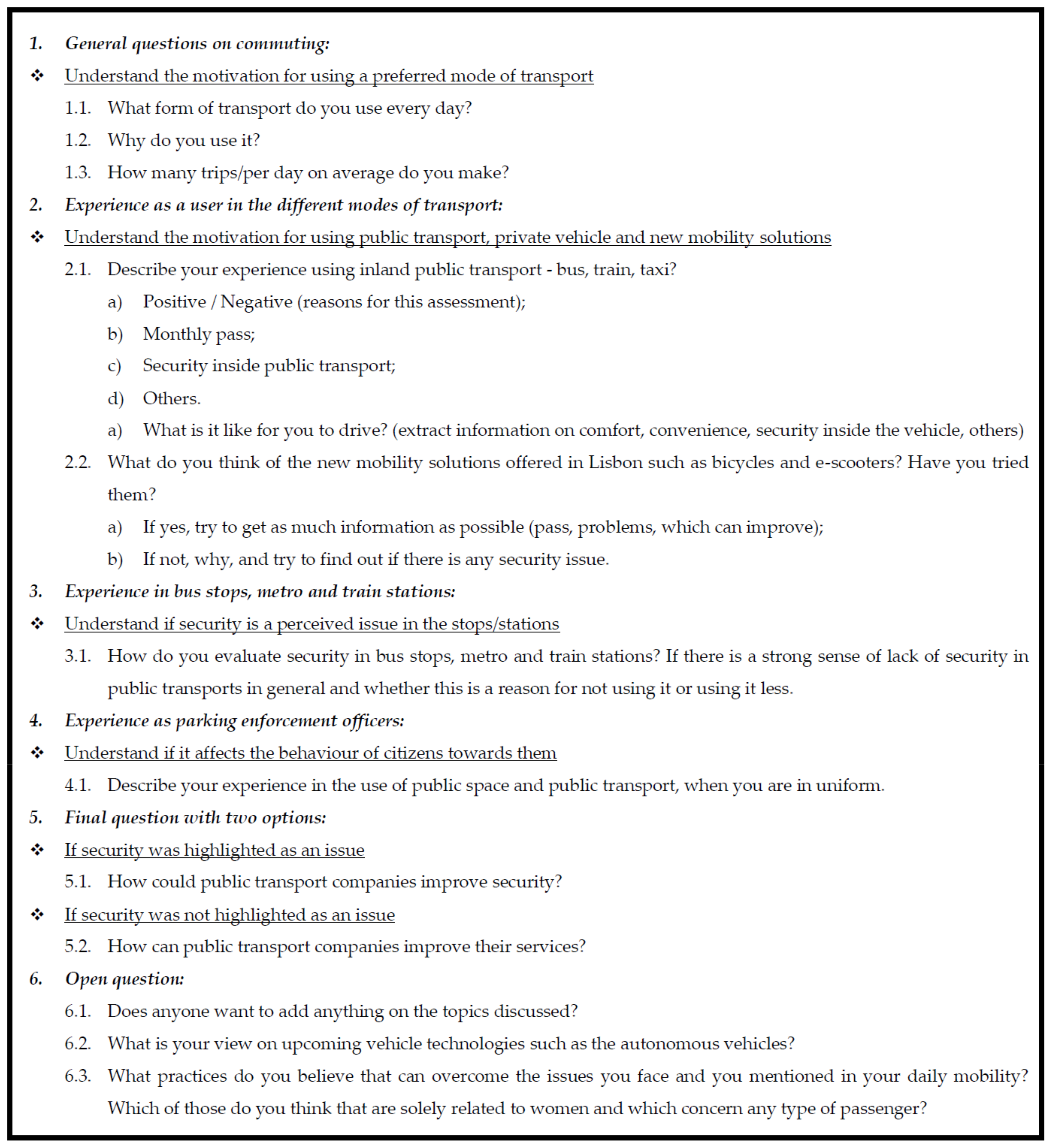
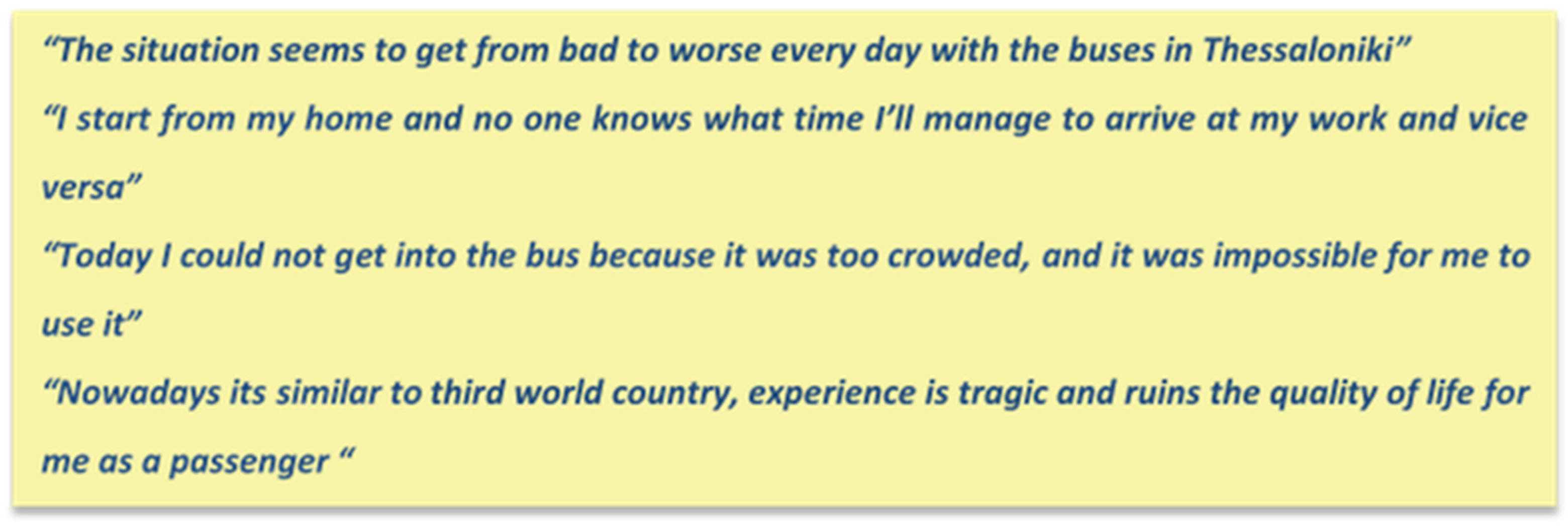


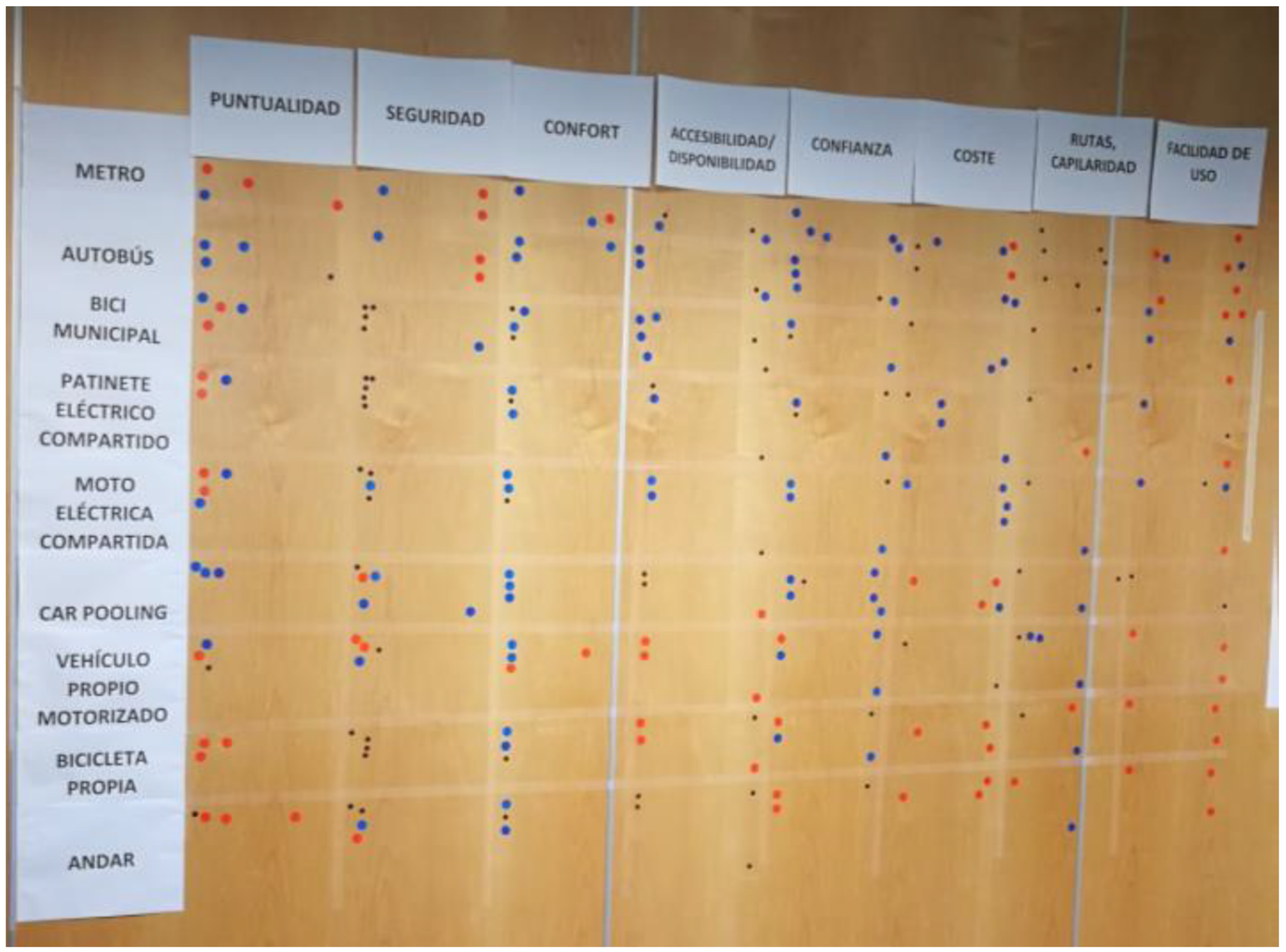
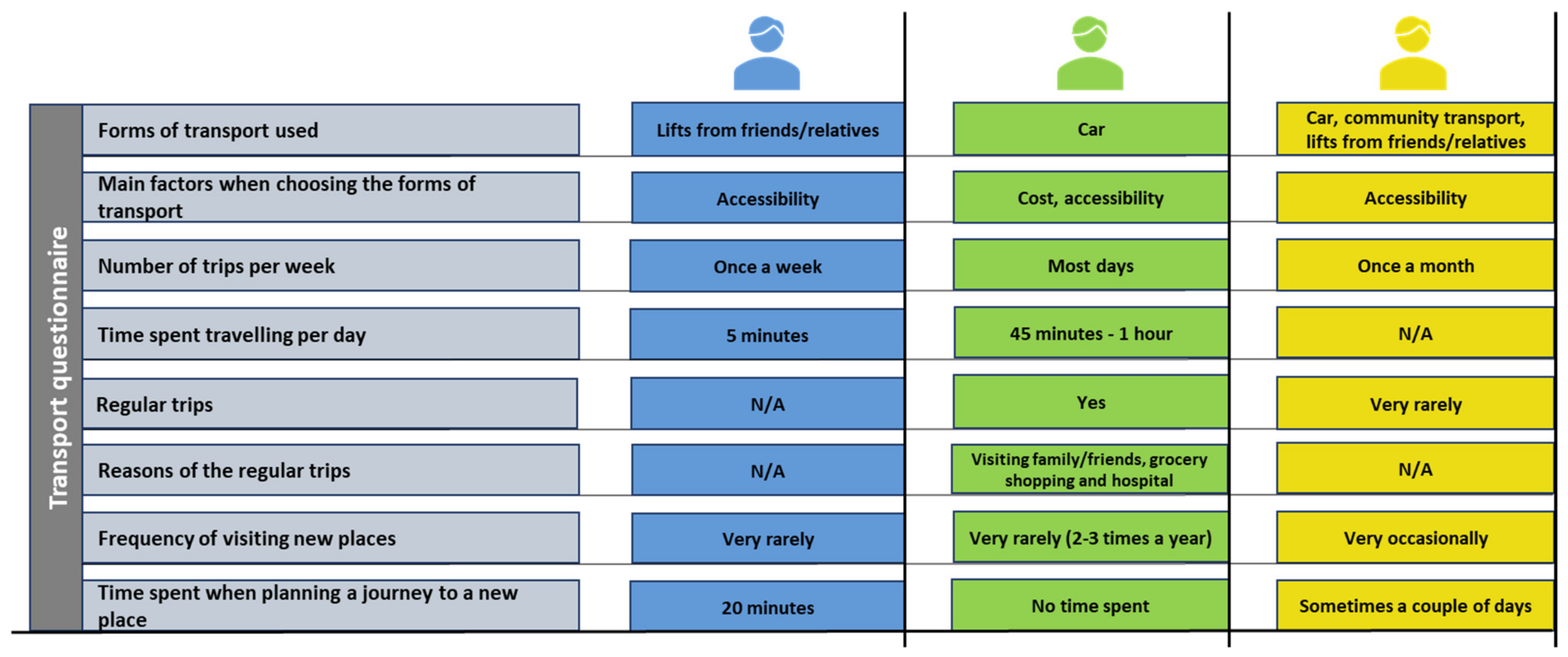
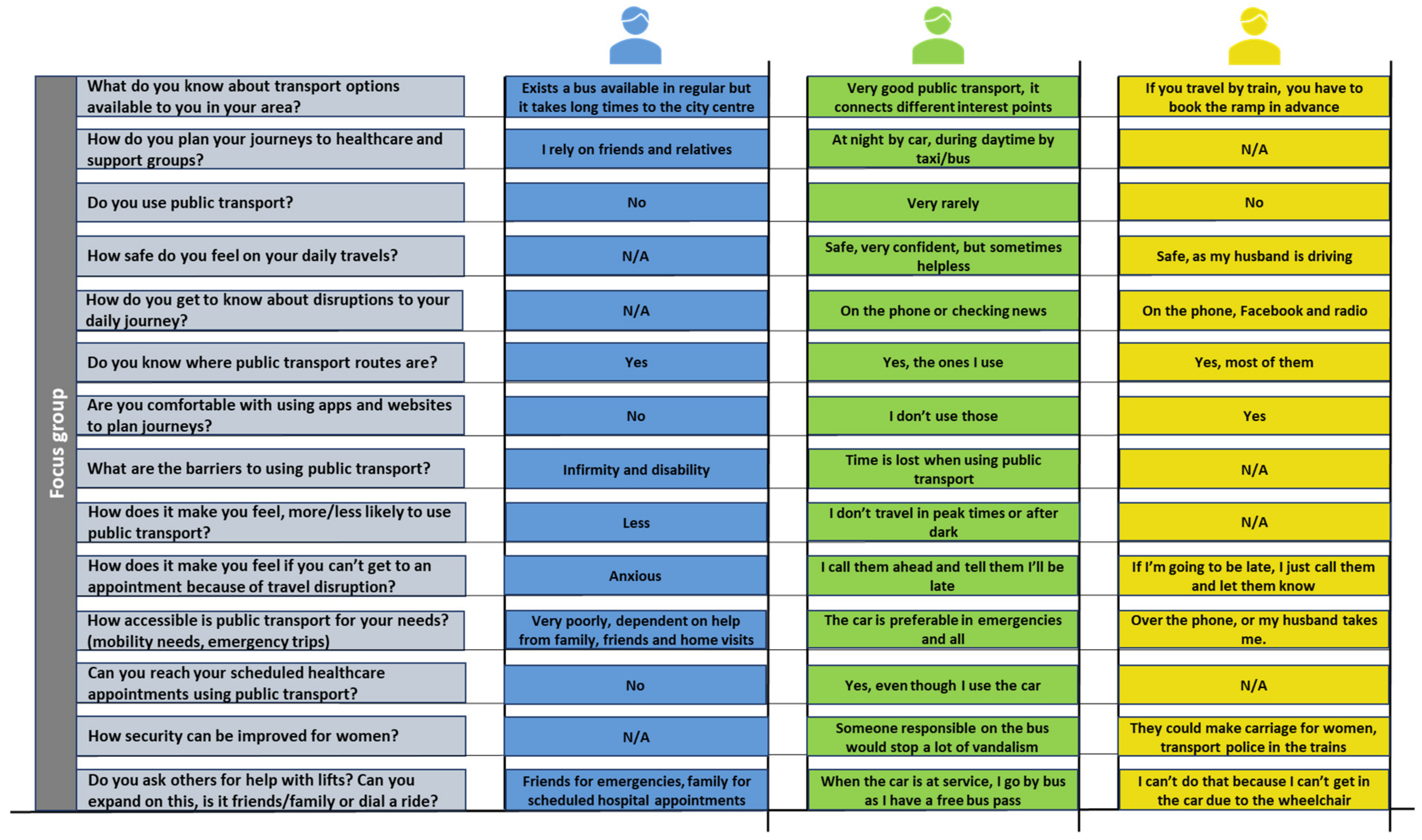
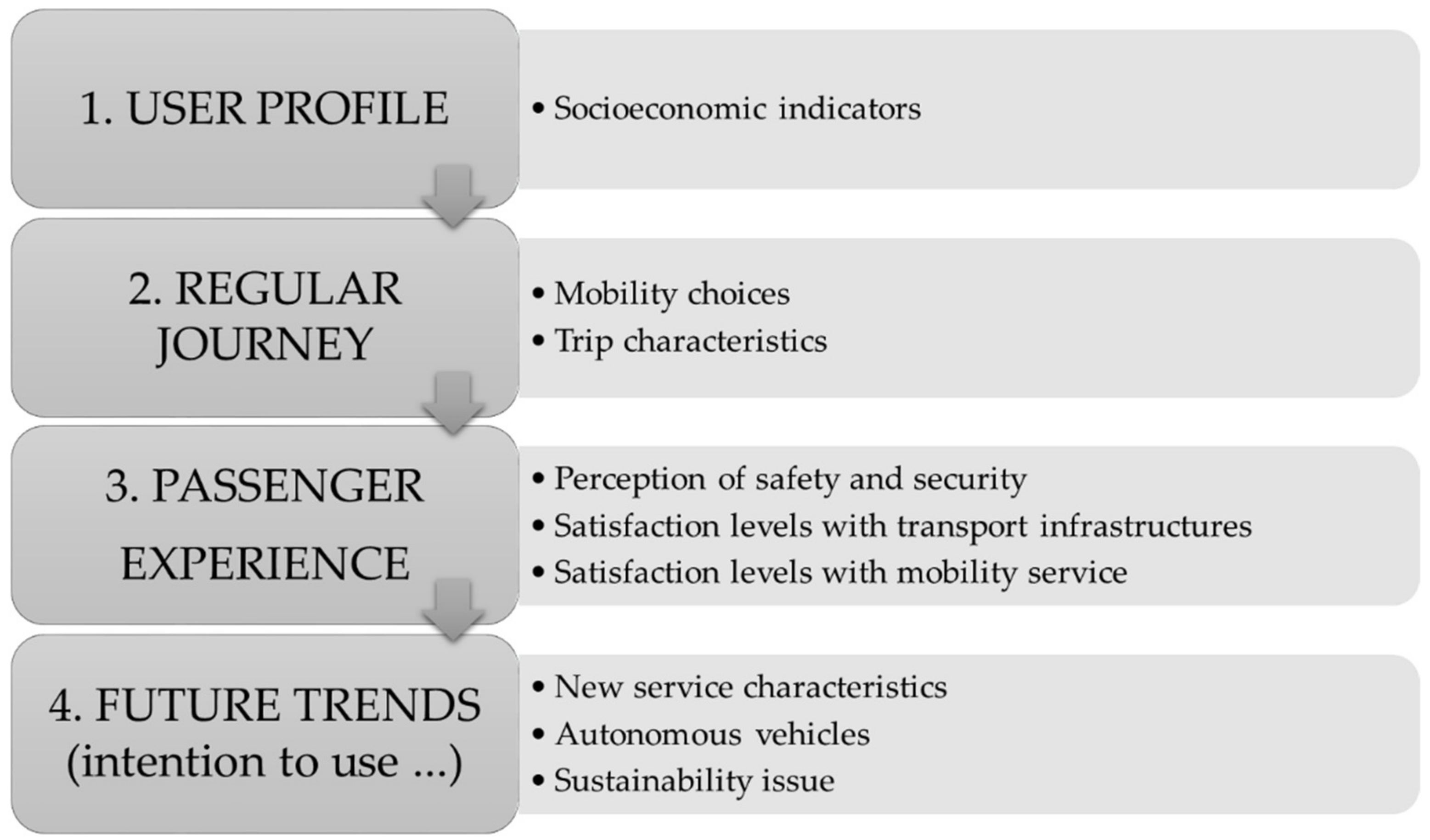
| Greek Hub | Portuguese Hub | Spanish Hub | UK Hub | |
|---|---|---|---|---|
| City/region | Thessaloniki | Lisbon | Valencia | West Midlands |
| Period | February 2020 | October 2019 | September 2019 | March 2020 |
| Number of people | 6 women | 6 women | 10 women | 3 women |
| Age | Aver. 35 y.o. | Various | Various | 60-93 y.o. |
| Employment | Consultancy employees | Employees of a public transport authority | Different transport-related sectors | Various/retired |
| Type | Focus group | Focus group | Focus group | Phone interviews |
| Mobility Topics |
|
|
|
|
| Hub | Main Results |
|---|---|
| Greek |
|
| Portuguese |
|
| Spanish |
|
| UK |
|
Publisher’s Note: MDPI stays neutral with regard to jurisdictional claims in published maps and institutional affiliations. |
© 2021 by the authors. Licensee MDPI, Basel, Switzerland. This article is an open access article distributed under the terms and conditions of the Creative Commons Attribution (CC BY) license (http://creativecommons.org/licenses/by/4.0/).
Share and Cite
Pirra, M.; Kalakou, S.; Carboni, A.; Costa, M.; Diana, M.; Lynce, A.R. A Preliminary Analysis on Gender Aspects in Transport Systems and Mobility Services: Presentation of a Survey Design. Sustainability 2021, 13, 2676. https://doi.org/10.3390/su13052676
Pirra M, Kalakou S, Carboni A, Costa M, Diana M, Lynce AR. A Preliminary Analysis on Gender Aspects in Transport Systems and Mobility Services: Presentation of a Survey Design. Sustainability. 2021; 13(5):2676. https://doi.org/10.3390/su13052676
Chicago/Turabian StylePirra, Miriam, Sofia Kalakou, Angela Carboni, Mariana Costa, Marco Diana, and Ana Rita Lynce. 2021. "A Preliminary Analysis on Gender Aspects in Transport Systems and Mobility Services: Presentation of a Survey Design" Sustainability 13, no. 5: 2676. https://doi.org/10.3390/su13052676
APA StylePirra, M., Kalakou, S., Carboni, A., Costa, M., Diana, M., & Lynce, A. R. (2021). A Preliminary Analysis on Gender Aspects in Transport Systems and Mobility Services: Presentation of a Survey Design. Sustainability, 13(5), 2676. https://doi.org/10.3390/su13052676







